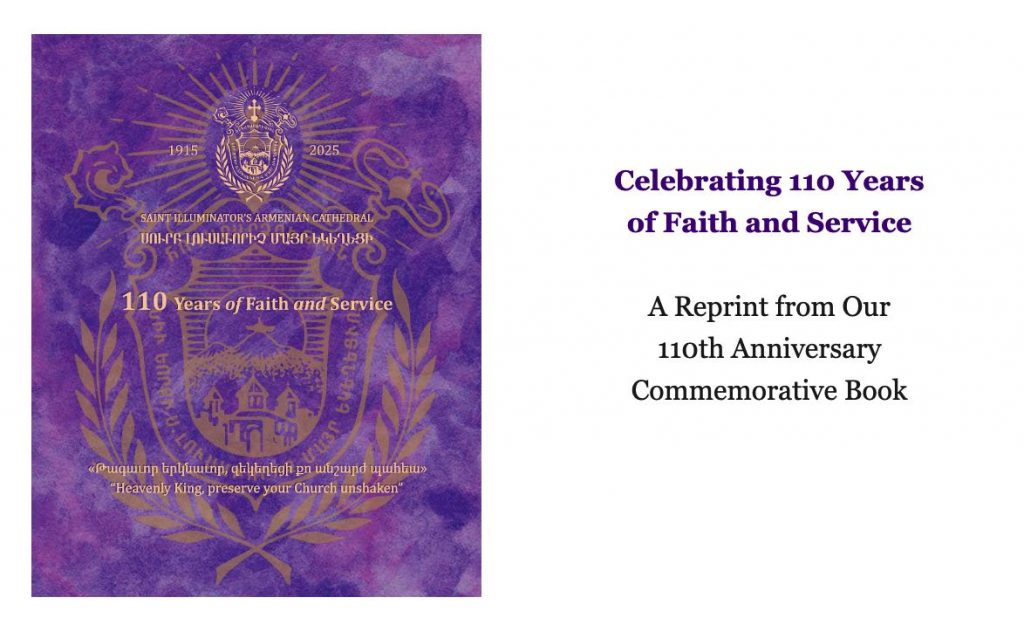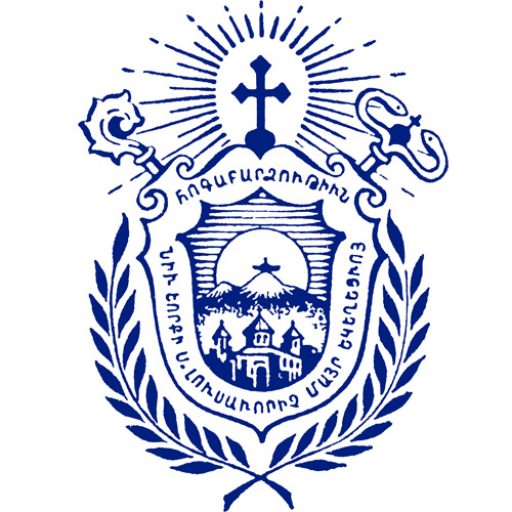
The Martyrs Altar Turns 25:
A New Shrine in an Historic Church
By Iris Papazian †
[This article originally appeared in the commemorative book for the 100th Anniversary of Mayr Yegeghetsi. It is reprinted here in loving memory of Iris Papazian.]
On April 24, 2000, a moving ceremony took place in New York’s historic St. Illuminator’s Cathedral. A congregation of more than four hundred, including representatives from New England and Mid-Atlantic parishes, watched as Archbishop Oshagan Choloyan, Prelate of the Eastern Prelacy of the Armenian Apostolic Church of America, consecrated a new altar in the church, dedicated to the memory of the 1.5 million Armenians massacred by the Turkish Ottoman Empire in the genocide that began in 1915.
This year on April 24—the 100th anniversary of that genocide—Archbishop Oshagan celebrated a solemn Divine Liturgy at the Martyrs Altar, and for seven days following offered prayers during evening services in front of the altar that now seemed to take on new luster because of the canonization of the Martyrs of April on April 23, 2015, in ceremonies in Holy Etchmiadzin presided by His Holiness Karekin II, Supreme Patriarch and Catholicos of All Armenians, and His Holiness Aram I, Catholicos of the Holy See of the Great House of Cilicia.
The austere altar of black marble, incised with a map of historic Armenia and crowned by a glass case containing part of a skeleton lying in sand, is graphic testimony to a terrible chapter in Armenian history: the forced deportation marches in which hundreds of thousands of defenseless people, most of them women and children and the aged, were sent into the Syrian desert to be killed, or to die of starvation, heat, and thirst.

The Martyrs Altar was designed and executed by a collaboration of the architects Dikran Tenguerian and Vache Aslanian. Tenguerian also executed Mayr Yegeghetsi’s Cathedral sign which appears in the tympanum over her entrance doors. The painting hanging on the Altar is the work of Kevork Mourad.
Erecting the altar was Archbishop Oshagan’s dream. Two years earlier—in 1998—Dr. Herand Markarian, an Armenian American playwright, went to the desert site of Deir El Zor where some of the worst massacres took place. He went into the caves where the remains of the massacred Armenians could still be found, and brought them to the U.S. He presented the sacred relics to the Prelate, who then firmly developed the plan of giving these bones a permanent resting place of honor, “publicly displayed, so our youth will remember,” he said.

The relics enshrined in the Martyrs Altar are believed to be those of a teenaged girl who perished in the desert at Deir el Zor.
Generous sponsorship to design and build the new altar came from Carl and Emma Sogoian of Detroit, Michigan, who were present as Archbishop Oshagan spoke the words of consecration, and passed to them the first of hundreds of lit candles that ultimately filled the interior of the Cathedral.
In his sermon, the Prelate said, “This will be an altar for hope and light; a place for meeting with our martyrs, where Armenian Americans will come to pray, and to renew their sense of Armenian identity.” As for 54 100th ANNIVERSARY | 1915–2015 the denial of the Armenian genocide by Turkey, the Archbishop said, “We will not forget, and cannot forgive until they accept responsibility, because forgiveness must come from the victims themselves.”
“O Christ, crowner of the saints . . . through the supplications of the Holy Martyrs who were massacred during the Armenian Genocide . . . Hear us, O Lord, and have mercy.”
— From the prayer of intercession in the Zhamakirk
On March 12, 2016, H. E. Archbishop Oshagan consecrated icons of the Holy Martyrs of the Armenian Genocide. Each parish of the Eastern Prelacy received a consecrated copy of the original, which hangs in Mayr Yegeghetsi. The icons are the work of Rudik Petrosyan.

On March 12, 2016, H. E. Archbishop Oshagan consecrated icons of the Holy Martyrs of the Armenian Genocide. Each parish of the Eastern Prelacy received a consecrated copy of the original, which hangs in Mayr Yegeghetsi. The icons are the work of Rudik Petrosyan.
 Participants in the consecration ceremony of the Martyrs Icons, with H. E. Archbishop Oshagan.
Participants in the consecration ceremony of the Martyrs Icons, with H. E. Archbishop Oshagan.
The history of St. Illuminator’s Cathedral, oldest of the city’s Armenian churches, has been linked from the start with the genocide. Founded in 1915—the year the massacres began—in a building purchased from the Rose Hill Methodist Episcopal Church, it became the religious, social, and charitable center for the survivors.
The two Catholicoi declared on April 23, 2015: We canonize the Martyrs of the Armenian Genocide and declare April 24 to be the day of Commemoration of the Holy Martyrs, who were killed during the Armenian Genocide for faith and homeland…and now, Holy Martyrs, remembering you eternally, in prayerful supplication, we appeal to you: Receive our prayers and intercede for us so that we too, with fearless love, may also continually glorify the Father and the Son and the Holy Spirit.
The Martyrs Altar at St. Illuminator’s Cathedral is now a true pilgrimage site where pilgrims will come to pray to the Martyrs seeking their intercession.
